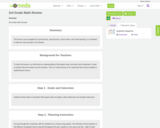
3rd Grade Math Review
- Subject:
- Professional Learning
- Material Type:
- Assessment
- Author:
- Fenja
- Date Added:
- 04/06/2021

3rd Grade Math Review

We are making "All About Me Posters" using Adobe Spark

This is a lesson plan designed to be used in Family & Consumer Sciences adult roles. It can be used as an activity while learning about self concept, but could also be a getting to know you activity for the beginning of a course.

This lesson is a culmination assessment of the things they have learned in social studies to analyze the ways cultures use, maintian, and preserve the physical enviornment. Identify ways people use their physical enviornment, compare changes in natural resources over time, describe ways to preserve and protect natural resources, compare perspectives of various communities toward their natural enviornment, and make inferences about the positive and negative impacts of human-caused change to the natural enviornment.

This is a lesson plan designed to teach students science standard 2 Standard 2.2.2Plan and carry out an investigation of the structure and function of plant and animal parts in different habitats. Emphasize how different plants and animals have different structures to survive in their habitat. Examples could include the shallow roots of a cactus in the desert or the seasonal changes in the fur coat of a wolf. (LS1.A, LS4.A, LS4.D)Students will demonstrate their knowledge by creating a newsletter using the Apple Pages app.
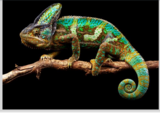
Students will conduct a research project on an animal of choice. Students will present the information they found in the storytelling format.

This is a lesson intended for 6th-grade mathematics on deriving the formula for the area of a triangle based upon prior knowledge of parallelograms. This lesson aligns with Utah Core Standards 6.G.1 and 6.G.3. This lesson is intended to be taught in a face-to-face setting and will take approximately 35-45 minutes.
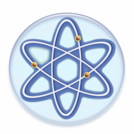
Introduce students to atoms with an engaging Google Slides and Cornell Notes activity. Image: jayofboy - https://www.freeimages.com/photo/atom-1307057

This lesson is about the basic cloud types. Students will spend time gathering information, will participate in an experiment, will review the information and create an Adobe Spark video that contains particular information about each cloud type.

This lesson is intended to help second grade students understand the basics of what it means to be a good digital citizen. ISTE Student Standards for Digital Citizenship:2b Students engage in positive, safe, legal and ethical behavior when using technology, including social interactions online or when using networked devices.

This lesson plan meets the secondary requirements for The Engish Language Arts Standard Reading: Literature Grades 7-12 with the option of meeting the additional standard of Speaking and Listening. This lesson offers specific details with flexibility for implementation in the classroom. Students can work independently or in groups and be able to create their final book project using technology.

This lesson plan meets the secondary requirements for The Engish Language Arts Standard Speaking and Listening Standards 4 & 5. This lesson offers specific details with flexibility for implementation in the classroom. Students can choose how they would like to present their information using their choice of multimedia tool.

This lesson plan meets the secondary requirements for The Engish Language Arts Standard Reading: Literature Grades 7-12 with the option of meeting the additional standard of Speaking and Listening. This lesson offers specific details with flexibility for implementation in the classroom. Students can work independently or in groups and be able to create their final book project using technology.

This lesson plan is a 4th grade opinion writing project. This project is planned to take 2-3 weeks to fully complete. Students will complete various assignments online to help guide them towards their opinion of the prompt, "Which makes a better pet: a cat or a dog?" Students will be using Google Docs to write their opinion paper, Lucid Charts to organize their writing in a graphic organizer, and Adobe Spark to create their final product on this opinion project. Througout the lesson students will engage with the whole class, with partners or small group work, and complete individual work.

This is the lesson plan for 4th grade Chinese DLI - Culture emmersion. All the contents are designed by my own teaching experience. The students need to be intermediate to advanced low level to learn with this lesson plan.

This lesson should be used to teach digital citizenship standards. Students will present standards using Adobe Spark.
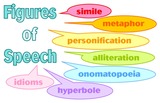
This lesson plan was created as a way for students to show their understanding of six different types of figurative language. Students will need to have learned about simile, metaphor, hyperbole, alliteration, onomatopoeia, and personification. Students will also need to have learned about citing sources for images found online. Image License: Attribution-NonCommercial-NoDerivs 2.0 Generic (CC BY-NC-ND 2.0)
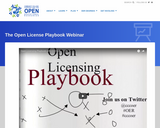
Open licensing of instructional materials such as textbooks, videos, and other related resources makes possible free sharing and remixing which reduces cost barriers for students. Creative Commons provides the legal infrastructure for easily sharing creative works including instructional materials but how do the different licenses indicate a resource can be re-used. Join us for an interactive session of playbook license scenarios where you test your knowledge of the OER re-use based on license type.
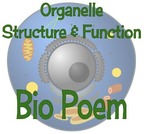
This is a fun and creative way for students to demonstrate their understanding of eukaryotic cell organelles. Students will create a bio poem about an organelle as if the organelle were a person. Their final product will be a poster or video of their poem that can be shared with the class. This lesson includes a bio poem organizer for students, as well as various links to interactive organelle structure and function websites.

This is a fun and creative way for students to demonstrate their understanding of eukaryotic cell organelles. Students will create a bio poem about an organelle as if the organelle were a person. Their final product will be a poster or video of their poem that can be shared with the class. This lesson includes a bio poem organizer for students, as well as various links to interactive organelle structure and function websites.